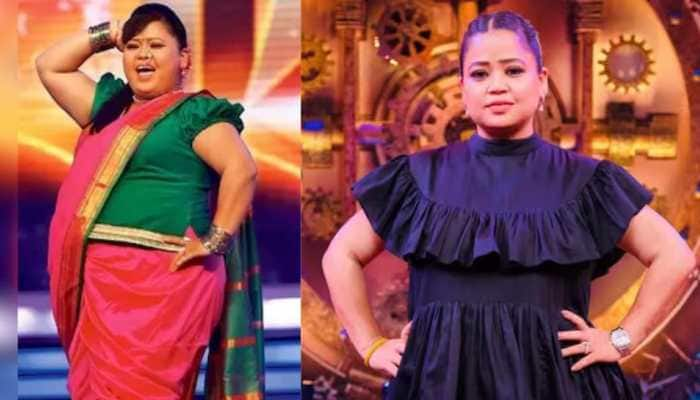Chaitra Navratri—The legend behind it!
Trending Photos
) Pic Courtesy: Thinkstock Images (Image used for representational purpose only)
Pic Courtesy: Thinkstock Images (Image used for representational purpose only) The auspicious festival of Chaitra Navratri has begun and so it have the preparations to seek the blessings of Goddess Shakti. Navratri is celebrated five times a year, namely—Vasanta Navaratri, Ashadha Navaratri, Sharad Navaratri, Paush/Magha Navaratri and Magha Navaratri.
However, out of all these, two are widely known and celebrated by all across the world—Vasanta Navratri and Sharad Navaratri. The Vasanta Navratra is also known by the name of Chaitra Navratri, which falls somewhere in the middle of March-April. While, the Sharad Navratri, which is the most important one and also referred to as the Maha Navratri is celebrated during September-October.
Legend of Chaitra Navratri:
The legend has it that when King Dooshibago was killed by a lion, it was decided that prince Sudarsana would be crowned next. However, King Yudhajit of Ujjain, the father of Queen Lilavati, and King Virasena of Kalinga, the father of Queen Manorama, did not approve of this, as they too had their eyes set on the crown of Kosala for their respective grandsons, which resulted in a fight between them. After which King Virasena got killed in the battle. Following which his daughter Manorama fled to the forest with Prince Sudarsana and a eunuch, taking refuge in under Rishi Bharadwaj.
On the other hand, King Yudhajit, crowned his grandson, Satrujit, at Ayodhya, the capital of Kosala. After which he set his eyes to get hold of Manorama and her son. However, the Rishi told him that he can't let go of them, as they took refuge under him, making Yudhajit furious. Yudhajit became so angry that he wanted to attack the Rishi. But, was stopped by his minister.
Meanwhile, Prince Sudarsana's luck favoured him. Once, a hermit's son called the eunuch by his Sanskrit name Kleeba. Prince caught the first syllable Kli and began to pronounce it as Kleem. This syllable became a powerful and sacred Mantra. It is the Bija Akshara (root syllable) of the Divine Mother Goddess.
After reciting the mantra, Sudarsana attained the blessings of Goddess Shakti. The story goes on that the Goddess appeared before him and granted him divine weapons and an inexhaustible quiver.
On the other side, the emissaries of the king of Benares passed through the Ashram of the Rishi one day when they saw the Sudarsana and recommended him to Princess Sashikala, the daughter of the king of Benares.
The Swayamvara ceremony at which the princess was to choose her spouse was arranged. Sashikala at once chose Sudarsana and they got married. However, King Yudhajit, who was also present there picked up a fight with the king of Benaras. Then, Goddess helped Sudarsana and his father-in-law. During the fight, Yudhajit tried to mock the Goddess, after which she took upon Yudhajit and crumbled his army to ashes.
Thus Sudarsana, with his wife and his father-in-law, took refuge under the Goddess and thanked her. The Goddess Shakti was utterly pleased with them and ordered them to worship her with havan and other means during the Vasanta Navaratri. Then she disappeared.
Sudarsana and his wife Sashikala returned to the ashram of Rishi Bharadwaja, after which he was rightly crowned as the king of Kosala. Sudarsana, his wife Sashikala and the king of Benares did as the Goddess had directed them to. They worshipped her during the Vasanta Navaratri.
Interestingly, King Sudarsana's descendants were Lord Rama and Lakshmana, who continued to worship the Goddess. They even prayed to Maa Shakti during the Sharad Navaratri and were blessed by the Goddess, who helped them in in the recovery of Sita.
Wikipedia mentioned that as per the Krittibas Ramayana, Lord Rama invoked the goddess Durga in his epic battle against Ravana. Although Goddess Durga was traditionally worshipped in the late spring, Lord Rama had to invoke her in the form of astam (eighth) Mahavidya (Maa Bagla) in the autumn and thus is known as akaal bodhan (invoking out of scheduled time).
This autumnal ritual was different from the conventional Durga Puja, which is usually celebrated in the springtime. So, this Puja is also known as 'akal-bodhan' or out-of-season ('akal') worship ('bodhan'). This Rama's date for the Navaratri puja has now gained ascendancy and culminates with Dusherra in North India on the following day.
Here's wishing you all a Happy Navratri!
Stay informed on all the latest news, real-time breaking news updates, and follow all the important headlines in india news and world News on Zee News.
Live Tv







)
)
)
)
)
)
)
)
)
)
